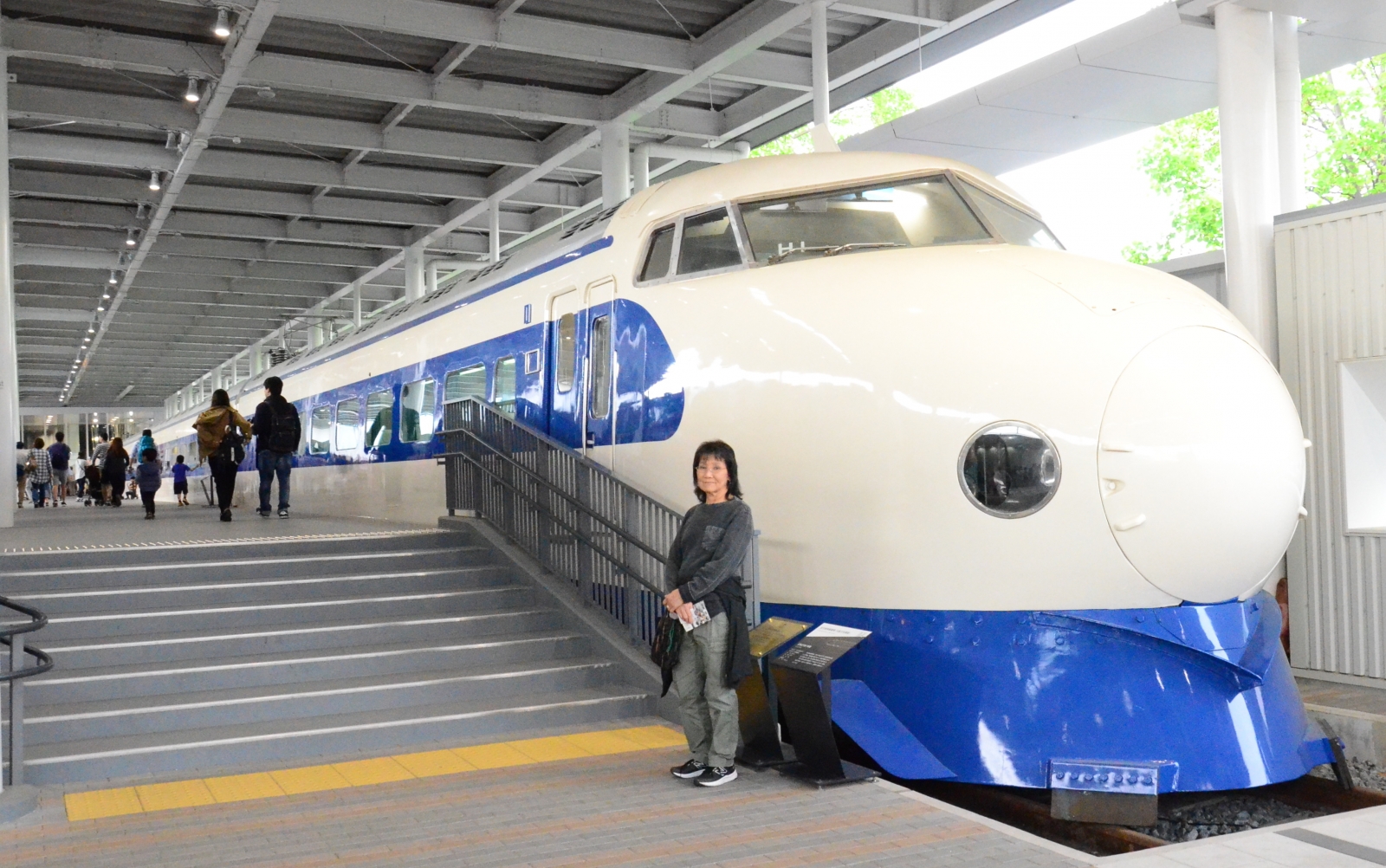"Be like a train; go in the rain, go in the sun, go in the storm, go in the dark tunnels! Be like a train; concentrate on your road and go with no hesitation! " --Mehmet Murat ildan

Kyoto Railway Museum Entrance
During the Kyoto leg of our 2017 spring trip to Japan, one of our goals was to visit the Kyoto Railway Museum. During our 2016 visit to Kyoto, we had missed the opening of the museum by just a few days, and we were determined to go there during this trip.
On the morning of our visit, the sky was cloudy, and a fine mist fell on us intermittently as we walked from Kyoto Station. In retrospect, it would have been easier to ride one of the frequently scheduled busses from the station, but once afoot, we were committed. We arrived at the museum entrance a few minutes before opening, and took our place in a rapidly growing line of visitors, among whom was an adorable group of early grade elementary school students, replete with backpacks, water bottles, and really spiffy uniforms, assembled in formation next to the entrance queue.
The children were all beaming with excitement and anticipation, and it is no wonder. Aside from containing an impressive collection of historic and modern trains, a lot of exhibits in the museum were made for the participation of children of all ages.

Type 230, s/n 233; the oldest existing production model steam locomotive in the English style manufactured in Japan; manufactured in 1903 by Kisha Seizo.

First Japan manufactured large electric locomotive EF52

Kyoto Railway Museum main floor; left to right: Shinkansen 500 series, Kuhane, and Raicho limited express trains.

Ritsuko standing in front of a Shinkansen Model "0"

Inside the Shinkansen Model 0 "ordinary" class passenger car

Inside the Shinkansen Model 0 Green Car "first class passenger car"
On the main floor, a very popular exhibit was a pedal powered rail inspection car. The seat height was set for children, therefore most adults who tried it struggled (personal experience). Another popular group of exhibits were the simulators, where people could simulate driving trains or operating various control consoles. But for me, the ultimate participatory exhibit was the steam locomotive train that visitors to the museum could ride.
The appeal of the museum exhibits is quite broad, and I think that anyone with an interest in trains or in the history of Japan should visit this museum if ever in Kyoto. It contains a really impressive collection of trains, railway equipment, and timeline exhibits arranged in the huge, three floor main hall and in the adjacent locomotive roundhouse in such a way that graphically illustrates the amazing history of rail in Japan, from its beginning during the Meiji Period to the present.
An exhibit, or series of exhibits, that really resonated with me were those showcasing the first generation Shinkansen, the Model 0, that was put into service in 1964 on the new Tokaido Shinkansen Line with service between Tokyo and Shin-Osaka. When I lived in Japan in the early to mid 1970's, the Model 0 was still in service. Looking at the dining car, and the various types of passenger cars, certainly evoked memories of that era.
The first time I rode in a Shinkansen was in the early summer of 1974, when I traveled with some of my Air Force buddies to Shimoda for a weekend beach outing, opting to ride a "bullet train" the short distance from Tokyo Station to Atami. It was the first time for most of us to board one of the sleek super fast trains. I remember at that time, admiring not only the ultra smooth ride while traveling faster than any other train in the world, but also the simple elegance and cleverly designed functionality of the passenger car interiors. It would have been impossible for me to imagine at the time how the Shinkansen would evolve, but after several decades, several train model generations, and thousands of miles of traveling via Shinkansen, I still marvel at the simple elegance, functionality, and beauty of these incredible trains whenever I ride in or even see a Shinkansen.
Seeing how far the rail transportation has developed in Japan since its humble beginning in 1872 to the most comprehensive and advanced railway system of any country in the world, one might ask, "What could possibly be next?"

Kyoto Railway Museum locomotive roundhouse
In the next decade, we should see the opening of the Chuo Shinkansen, providing Maglev service between Tokyo's Shinagawa Station and Nagoya, and then eventually Osaka. Maglev trains have been under development in Japan for decades, and working test models of the trains have set world speed records, with a L0 Series train reaching a speed of 603 km/h (375 mph) during a manned test in April 2015.
The history of railways in Japan is an amazing story. It is an integral part of the incredible transformation of Japan from a feudal society in peril from imperial encroachment by the superpowers of the mid 19th century world to an industrialized empire in the late 19th through mid 20th centuries, and then emerging from the ashes of World War II to become a modern standard for advanced technical innovation and for excellence in providing an intricate infrastructure that well serves its population. The Kyoto Railway Museum, in my opinion, does a superb job of presenting that story.

